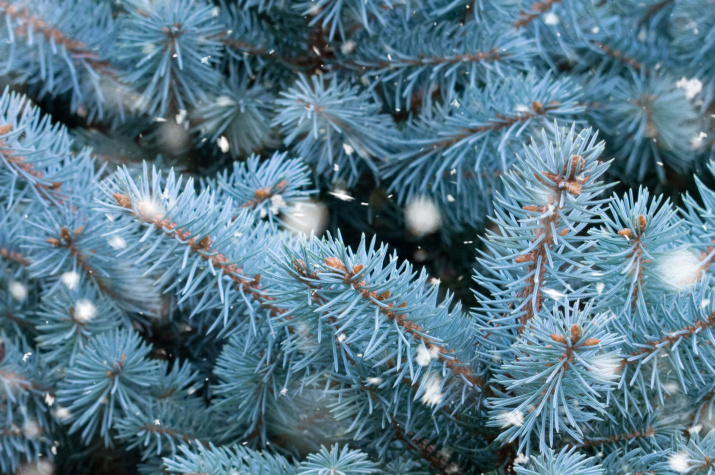The scientists of the Federal Research Center "Krasnoyarsk Science Center of the Siberian Branch of the Russian Academy of Sciences" determined that blue spruce has such a color shade due to the presence of nanotubes in the epicuticular wax covering the needles and leaves.
The several microns long nanoobjects affect the light that enters the plants. Thanks to this, the plants can survive in a lack of light and increase the efficiency of photosynthesis. The research results are published in the collection of conferences International Conference on Information Technology and Nanotechnology.
Many parts of the plants are covered with epicuticular wax. It protects the leaves from excess moisture and dryness, insect pests and chemicals. When light strikes a photosynthesizing surface, the first thing it encounters on its way is a waxy layer that affects the optical characteristics of the penetrating radiation.
Having studied the effect of the surface layer on the optical properties of the blue spruce needles and the leaves of glaucous wheat, physicists came to the conclusion that it is the nanoobjects that are responsible for the blue color.
“In 2016, scientists from England discovered that it was not pigments that were responsible for the blue color of plants, but a certain photonic-crystal structure in the chloroplasts of plants. There are many blue spruces growing in Siberia; we began to look for the cause of their blue color and came across wax. It turned out the wax is responsible for the unusual color. If this layer is chemically removed, then visually the tree will become an ordinary green spruce. We also examined glaucous wheat and found that the thick waxy coat of the bluish plants consists of nanotubes. When studying the spectral characteristics of the wax, we found that it absorbs almost all ultraviolet light and emits it in the visible range of light, that is, it fluoresces. By absorbing short-wave light, the wax layer protects the inner structure of cells from ultraviolet radiation and at the same time transfers it to the visible region of the spectrum, thereby increasing the efficiency of photosynthesis," said one of the authors of the study, Evgeny Bukhanov, junior researcher at Kirensky Institute of Physics of Krasnoyarsk Science Center SB RAS.



